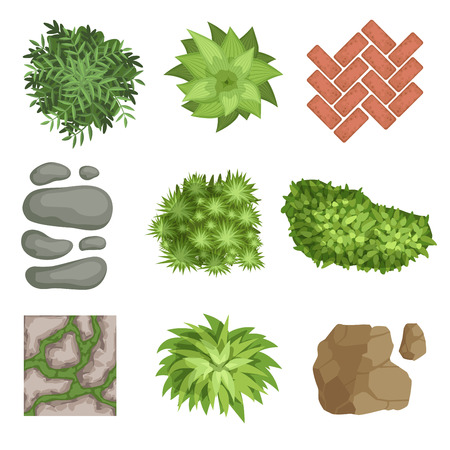Understanding Fire-Resistant Landscaping
Creating a fire-resistant landscape starts with understanding how wildfires behave and how your yard can either help slow down or fuel a fire. In areas where wildfires are common, especially in parts of the western United States, designing your landscape with fire safety in mind is not just smart—it’s essential.
What Is Fire-Resistant Landscaping?
Fire-resistant landscaping involves designing and maintaining your yard in a way that reduces the chance of fire spreading to your home. This doesn’t mean your yard has to be barren or unattractive. You can still have a beautiful space by choosing the right plants, creating proper spacing, and keeping up with maintenance.
Defensible Space Zones
One of the key principles is creating defensible space around your home. This space acts as a buffer zone to slow or stop the spread of wildfire. Its typically divided into three zones:
| Zone | Distance from Home | Description |
|---|---|---|
| Zone 0 | 0–5 feet | This is the most critical area. Keep it free of anything flammable like wood mulch, dry leaves, or shrubs. Use hardscape materials like stone or gravel. |
| Zone 1 | 5–30 feet | Use low-growing, fire-resistant native plants. Keep grass trimmed and remove dead vegetation regularly. |
| Zone 2 | 30–100 feet (or to property line) | Create breaks between plant groups and trees to reduce fire spread. Thin out dense vegetation and remove ladder fuels that can carry fire upward. |
Plant Spacing and Grouping
The way you plant matters just as much as what you plant. Fire spreads more easily through continuous vegetation. Instead of planting large areas with dense shrubs or trees, group plants in small clusters with open space between them. This helps slow down a wildfire and makes it easier for firefighters to defend your home if needed.
How Fire Behaves in Landscapes
Understanding how fire moves through a landscape helps you make smarter design choices:
- Ladder Fuels: These are plants or objects that allow fire to climb from the ground up into trees or structures—like tall grasses under shrubs or low branches on trees.
- Wind Direction: Fires spread faster in the direction of the wind. Consider this when placing plants and structures.
- Slope: Fires move uphill faster than on flat ground. If your property is on a slope, give extra attention to clearing and spacing vegetation downhill from your home.
Quick Tips for Fire-Smart Design
- Keep lawns mowed and well-hydrated.
- Avoid placing wood piles, propane tanks, or flammable furniture near structures.
- Regularly clean roofs and gutters of dead leaves and pine needles.
- Select native plants that are adapted to your regions climate and tend to have lower resin content, making them less likely to ignite.
A thoughtfully designed landscape using these principles not only protects your home but also contributes to a healthier ecosystem by using native plants adapted to local conditions.
2. Why Native Plants Are Ideal for Fire-Resistance
When designing a fire-resistant landscape, native plants are one of the best choices you can make. These plants are naturally adapted to local conditions, making them more resilient during wildfire seasons. From California chaparral to the dry plains of Texas, native species have evolved to survive and even thrive in their unique environments—some with built-in resistance to fire.
Adaptability to Local Climate
Native plants are well-suited to the specific climate, soil, and weather patterns of your region. Because they’ve evolved in these conditions, they don’t need special care or extra resources to survive. This natural adaptability helps keep your landscape healthy and strong—important qualities when facing high heat or drought caused by fire-prone seasons.
Low Water Needs
Many native plants require far less water than non-native species. That’s especially important in areas like the Southwest or West Coast, where water conservation is critical. By choosing drought-tolerant natives, you reduce the need for irrigation systems that can be damaged in fires—and lessen the risk of creating overly lush landscapes that might fuel flames.
Examples of Low-Water Native Plants by Region:
| Region | Native Plant | Water Needs |
|---|---|---|
| California | California Lilac (Ceanothus) | Low |
| Southwest | Desert Marigold (Baileya multiradiata) | Very Low |
| Pacific Northwest | Kinnikinnick (Arctostaphylos uva-ursi) | Moderate to Low |
| Southeast | Purple Coneflower (Echinacea purpurea) | Moderate |
| Midwest | Prairie Dropseed (Sporobolus heterolepis) | Low |
Natural Fire Resistance Traits
Certain native plants have physical traits that make them less likely to catch fire. These can include high moisture content in leaves, minimal resin or sap production, and sparse branching that reduces fuel load. Using these types of plants around your home creates a defensible space that slows down fire spread and gives firefighters a better chance to protect structures.
Fire-Resistant Features Found in Natives:
- Thick, moist leaves (e.g., Toyon in California)
- Sparse growth patterns (e.g., Yarrow in the Midwest)
- No flammable oils or resins (e.g., Wild Strawberry in Pacific regions)
- Deep root systems that prevent soil erosion after fires
A Smart Choice for Sustainable Landscaping
Choosing native plants for your landscape not only makes your property more fire-resistant but also supports local wildlife and reduces maintenance costs. You’ll spend less time watering, fertilizing, and replacing plants—while creating a beautiful yard that blends naturally with your surroundings and helps protect your home.

3. Selecting Firewise Native Plants by Region
Choosing the right native plants for your region is key to designing a fire-resistant landscape. Native plants are already adapted to local conditions, and when selected carefully, they can reduce the risk of wildfire damage around your home. Here’s a regional guide to help you pick firewise native plants that not only thrive in your area but also help slow down the spread of fire.
Southwest (Arizona, New Mexico, West Texas)
The Southwest is known for its hot, dry climate. When selecting plants here, focus on low-resin, drought-tolerant species that retain moisture even during dry spells.
| Plant Name | Type | Fire-Resistant Features |
|---|---|---|
| Desert Marigold (Baileya multiradiata) | Perennial Flower | Low water needs, minimal deadwood |
| Red Yucca (Hesperaloe parviflora) | Shrub-like Succulent | Sap-free leaves, high moisture content |
| Sotol (Dasylirion wheeleri) | Drought-Tolerant Perennial | Tight growth form helps block embers |
Pacific Northwest (Oregon, Washington)
This region has a more temperate and moist climate. Look for native plants that are lush but not oily or resinous, which could ignite easily.
| Plant Name | Type | Fire-Resistant Features |
|---|---|---|
| Kinnikinnick (Arctostaphylos uva-ursi) | Groundcover | Lush foliage with low flammability |
| Sword Fern (Polystichum munitum) | Fern | Moisure-rich fronds resist ignition |
| Nootka Rose (Rosa nutkana) | Shrub | Dense greenery with minimal resin content |
Northern & Southern California
This state has varied climates from coastal to inland valleys. Wildfire risk is particularly high in the drier southern regions. Choose plants with high moisture content and avoid those with waxy or aromatic leaves.
| Plant Name | Type | Fire-Resistant Features |
|---|---|---|
| Cleveland Sage (Salvia clevelandii) | Shrub/Herbaceous Perennial | Drought-tolerant yet low in volatile oils compared to other sages |
| Coffeeberry (Frangula californica) | Shrub/Small Tree | Mature leaves hold moisture well; minimal litter production |
| Buckwheat (Eriogonum fasciculatum) | Shrub/Groundcover | Tidy growth habit helps reduce fuel load near structures |
A Few Tips When Choosing Firewise Plants:
- Select plants with high moisture content and low sap or resin levels.
- Avoid invasive species that can create dense fuel beds.
- Create spacing between plant groupings to prevent fire spread.
- Aim for clean landscaping—prune regularly and remove dead material.
Selecting region-appropriate native plants is one of the smartest ways to protect your home while maintaining a beautiful landscape. By working with nature instead of against it, you can build a space that’s both resilient and sustainable.
4. Design Tips for Creating a Fire-Resistant Yard
Creating a fire-resistant yard goes beyond just choosing the right plants — it involves thoughtful planning, smart design choices, and regular upkeep. Below are some easy-to-follow strategies to help reduce fire hazards in your landscape using native plants and practical design elements.
Hardscaping for Fire Defense
Hardscaping refers to non-plant elements like patios, pathways, gravel beds, and retaining walls. These features can act as firebreaks, slowing or stopping the spread of flames. Consider these ideas:
- Stone pathways: Create walkways around your home with flagstone, gravel, or pavers to separate plant zones.
- Gravel mulch: Use gravel or decomposed granite instead of bark mulch near structures to reduce flammable material.
- Retaining walls: Build stone or concrete walls on slopes to slow down wildfire movement.
- Fire pits: Opt for gas-burning fire pits over wood-burning ones to minimize stray embers.
Plant Layering Zones
Divide your yard into defensible space zones to organize plantings by distance from your home. Each zone should follow specific guidelines to reduce risk. Heres a quick breakdown:
| Zone | Distance from Home | Design Tips |
|---|---|---|
| Zone 0: Immediate Zone | 0–5 feet | No plants; use hardscape only. Keep area clear of debris and flammable materials. |
| Zone 1: Intermediate Zone | 5–30 feet | Sparse planting with low-growing, well-spaced native plants. Include hardscape breaks. |
| Zone 2: Extended Zone | 30–100 feet | Larger shrubs and trees spaced out; remove dead branches and ladder fuels regularly. |
Choosing and Placing Native Plants
Select native species that are naturally adapted to your region’s climate and have lower water needs. Space them appropriately so they don’t form continuous fuel paths. Some tips include:
- Avoid dense hedges: Break up large plantings with gravel or stone borders.
- Use moisture-retaining groundcovers: Choose native groundcovers that stay green through dry seasons.
- Create islands of plants: Group plants in small clusters with non-combustible materials around them.
Maintenance Routines That Matter
A well-maintained yard is a safer yard. Regular upkeep helps prevent the buildup of dry leaves, twigs, and other flammable materials that can easily catch fire. Here’s a simple checklist:
| Task | Frequency |
|---|---|
| Remove dead leaves and debris near structures | Weekly during dry months |
| Prune dead branches from shrubs and trees | Monthly or as needed |
| Mow grasses and groundcovers low | Bi-weekly in summer |
| Irrigate drought-stressed plants (as allowed) | As needed, early morning watering preferred |
A combination of smart design strategies—like adding hardscape features, layering native plants thoughtfully, and keeping up with maintenance—can make a big difference in protecting your home from wildfires while still enjoying a beautiful outdoor space.
5. Maintaining Your Fire-Resistant Landscape
Once youve designed a fire-resistant landscape using native plants, ongoing maintenance is key to keeping your yard safe and beautiful throughout the year. Regular upkeep helps prevent the buildup of dry plant material and ensures your plants stay healthy and well-spaced—two important factors in reducing fire risk.
Seasonal Maintenance Best Practices
Each season brings different tasks to keep your landscape firewise. Heres a simple guide to help you stay on track:
| Season | Tasks |
|---|---|
| Spring | Clear winter debris, check irrigation systems, prune back dead branches, apply mulch away from structures |
| Summer | Monitor for dry or dying plants, water deeply but infrequently, remove spent flowers and leaves |
| Fall | Rake leaves regularly, thin out crowded plants, cut back perennials after flowering |
| Winter | Inspect trees for broken limbs, plan for replanting with more natives, sharpen pruning tools |
Pruning Techniques for Fire Safety
Proper pruning not only keeps your landscape tidy but also helps reduce fuel for wildfires. Use these techniques:
- Limb up trees: Remove lower branches at least 6–10 feet from the ground to prevent ground fires from climbing.
- Create spacing: Ensure space between shrubs and trees so flames cant easily jump from one to another.
- Avoid ladder fuels: Don’t let low-growing plants touch tree branches—this creates a direct path for fire.
Managing Plant Debris
Dried leaves, twigs, and dead plant material can quickly become fire hazards if left unchecked. Here’s how to handle it:
- Curbside pickup: Use your local green waste collection service regularly.
- Mowing and trimming: Keep grasses short and trim overgrown areas often.
- No piles near structures: Never store wood chips or leaf piles close to your home or deck.
Tidy Zones Around Your Home
Create defensible zones by managing vegetation in layers around your property:
| Zone | Description |
|---|---|
| Zone 1 (0–5 ft) | No flammable plants; use stone paths, gravel, or low-growing succulents. |
| Zone 2 (5–30 ft) | Shrubs spaced apart; trees limbed up; regularly mowed grass. |
| Zone 3 (30–100 ft) | Natives thinned out; debris cleared seasonally; access paths maintained. |
A well-maintained fire-resistant landscape not only protects your home but also enhances its curb appeal. With seasonal care and mindful pruning, you can enjoy the beauty of native plants while staying prepared year-round.

